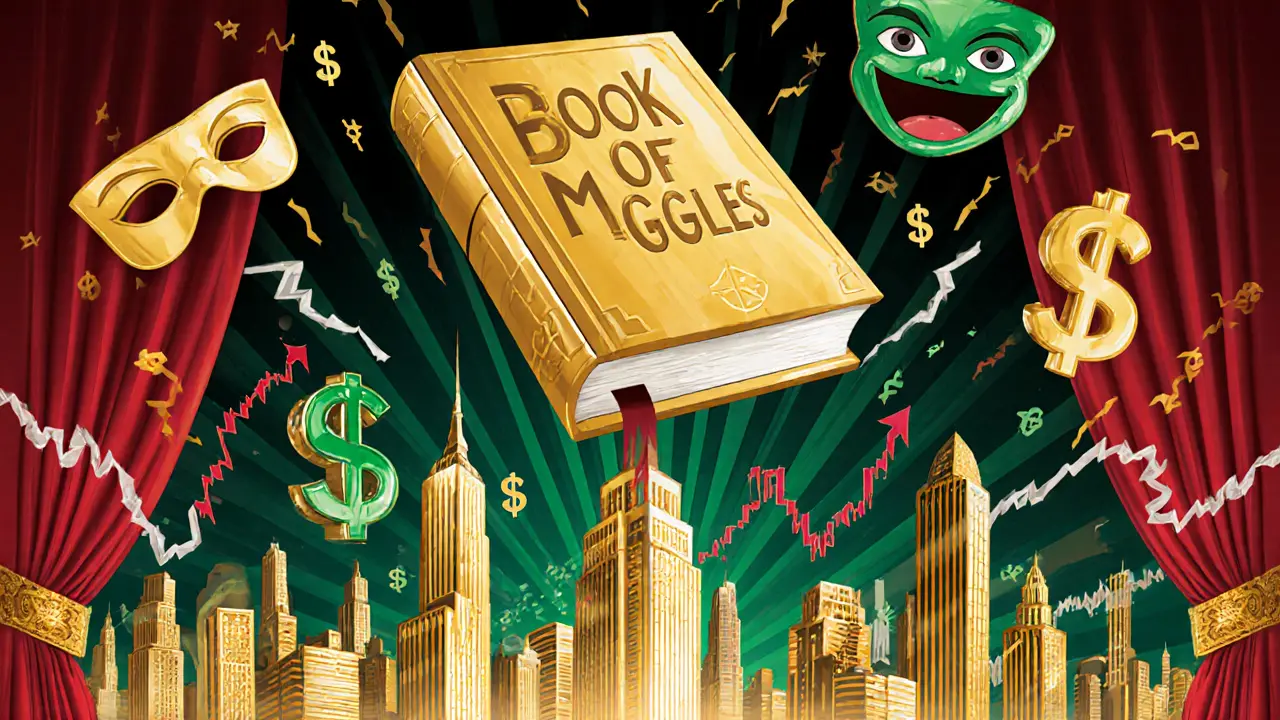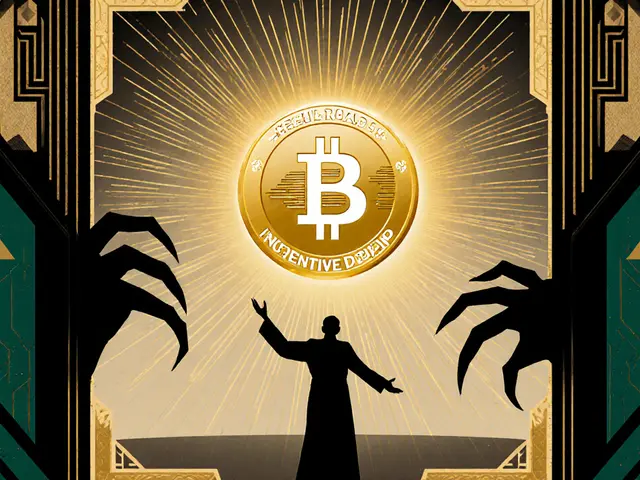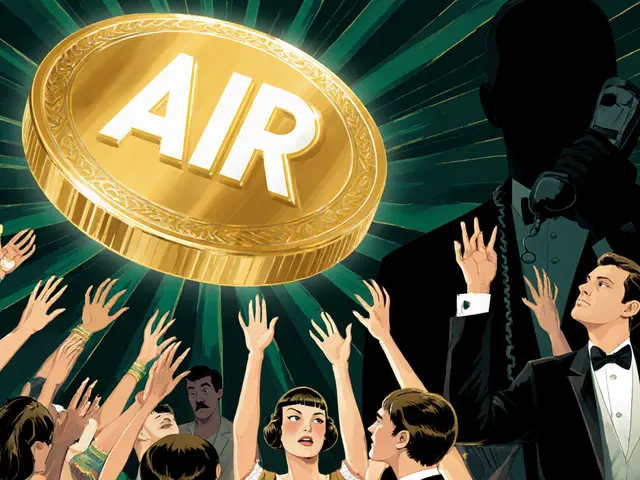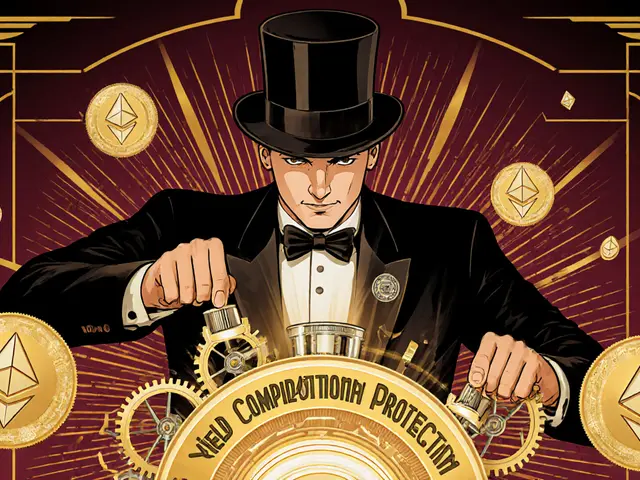BOMI Investment Risk Calculator
Calculate Your Potential Losses
Book of Miggles, or BOMI, isn’t a revolutionary blockchain project. It’s not a payment system, a decentralized finance tool, or even a well-documented startup. It’s a memecoin - a cryptocurrency built mostly on jokes, internet culture, and hype. And if you’ve seen it popping up on social media or crypto forums, you’re not alone. But before you think about buying it, you need to know what you’re really getting into.
What Exactly Is BOMI?
BOMI is a token built on the Base blockchain, which is a Layer-2 network developed by Coinbase. It launched in 2024 with a simple claim: it’s "dedicated to advancing the Miggles vision while promoting all projects on the Base chain." But here’s the problem - no one knows what "the Miggles vision" actually is. There’s no official website, no whitepaper, no team behind it. No GitHub repo. No roadmap. Just a token symbol, a contract address, and a lot of noise. It operates as an ERC-20 token, meaning it follows the same technical rules as other tokens on Ethereum and its offshoots like Base. It has a fixed supply of exactly 1,000,000 tokens. That’s it. No inflation, no burning, no staking. Just 1 million units floating around on decentralized exchanges.Where Can You Trade BOMI?
You won’t find BOMI on Binance, Coinbase, or Kraken. In fact, Binance explicitly says it’s not listed on their platform - and that’s a red flag. Major exchanges have strict rules about what they list. They check for security, liquidity, and legitimacy. BOMI doesn’t meet any of those standards. Instead, BOMI trades only on decentralized exchanges (DEXs), mostly Uniswap V2 on Base and a little bit on MEXC. The most active trading pair is BOMI/WETH-16, which accounts for 79% of all trading volume. That’s not a good sign. When one trading pair handles nearly all the action, it means the market is fragile. A single large trade can swing the price wildly. As of late 2024, BOMI’s price floated between $0.85 and $1.38 in just a few days. One trader on Reddit reported buying at $1.10 and selling at $0.85 within two hours because the order book was so thin. That’s not investing - that’s gambling with your wallet.Why Does BOMI Even Exist?
BOMI rides the coattails of the Base blockchain’s rapid growth. Base, launched in early 2023, has become one of the fastest-growing Layer-2 networks, with over $11 billion locked in DeFi protocols by September 2024. It’s popular because it’s cheap, fast, and backed by Coinbase. That made it a magnet for memecoins. BOMI is one of thousands of new memecoins that popped up on Base in 2024. The platform saw a 387% increase in new token launches that quarter. But BOMI isn’t even close to the top. Tokens like DEGEN have market caps in the hundreds of millions. BOMI? Its market cap hovered around $1 million at best - barely enough to register on any chart. Its only real "purpose" seems to be to attract attention. Some users say it’s meant to "promote Base chain projects." But there’s no evidence of that. No partnerships. No events. No collaborations. Just a token with a weird name and zero utility.
Who’s Behind It?
This is the biggest issue. There’s no known team. No developers. No social media accounts tied to the project. No Telegram group with verified admins. No Twitter thread from a founder. On crypto projects, anonymity isn’t always bad - but when combined with zero documentation and no roadmap, it’s a warning sign. Security firms like CertiK say tokens with anonymous teams and no audits are high-risk. BOMI has never been audited. That means the smart contract could have hidden backdoors. Someone could freeze your tokens, drain liquidity, or even change the rules after you buy in. And there’s nothing you can do about it.Is BOMI Safe to Buy?
Let’s be blunt: if you’re looking for a long-term investment, a store of value, or a coin you can use to pay for goods, BOMI is not it. It’s not designed for that. It’s designed for short-term speculation. The data shows it’s mostly traded by people who buy low, pump it for a few hours, then sell to someone else before it crashes. Arkham Intelligence found that 92% of BOMI transactions are immediate resales. That’s not adoption - that’s a Ponzi-style cycle. Even the trading experience is rough. Users on MEXC report 15-20% slippage - meaning you think you’re buying at $1.20, but the trade executes at $1.44 or $0.96. That’s because there’s so little liquidity. You’re essentially trading with a handful of people. Setting up to trade BOMI isn’t easy either. You need a Web3 wallet like MetaMask, you have to manually add the Base network, and you need to adjust your slippage tolerance to 10-15%. If you mess up the network settings, your transaction will fail. For beginners, that’s a 45-minute headache.What Do Experts Say?
Major crypto publications like CoinDesk and Cointelegraph haven’t covered BOMI. Not once. That’s telling. They cover Dogecoin, Shiba Inu, even obscure tokens with actual communities. BOMI? Silence. Analysts at Delphi Digital labeled tokens like BOMI as "high-risk speculative assets with limited long-term viability." Their research shows 87% of similar low-liquidity memecoins die within six months of launch. The SEC has also ramped up scrutiny on memecoins since September 2024, especially those without utility. BOMI fits that profile perfectly. If regulators decide to crack down, these tokens could vanish overnight - and your investment with them.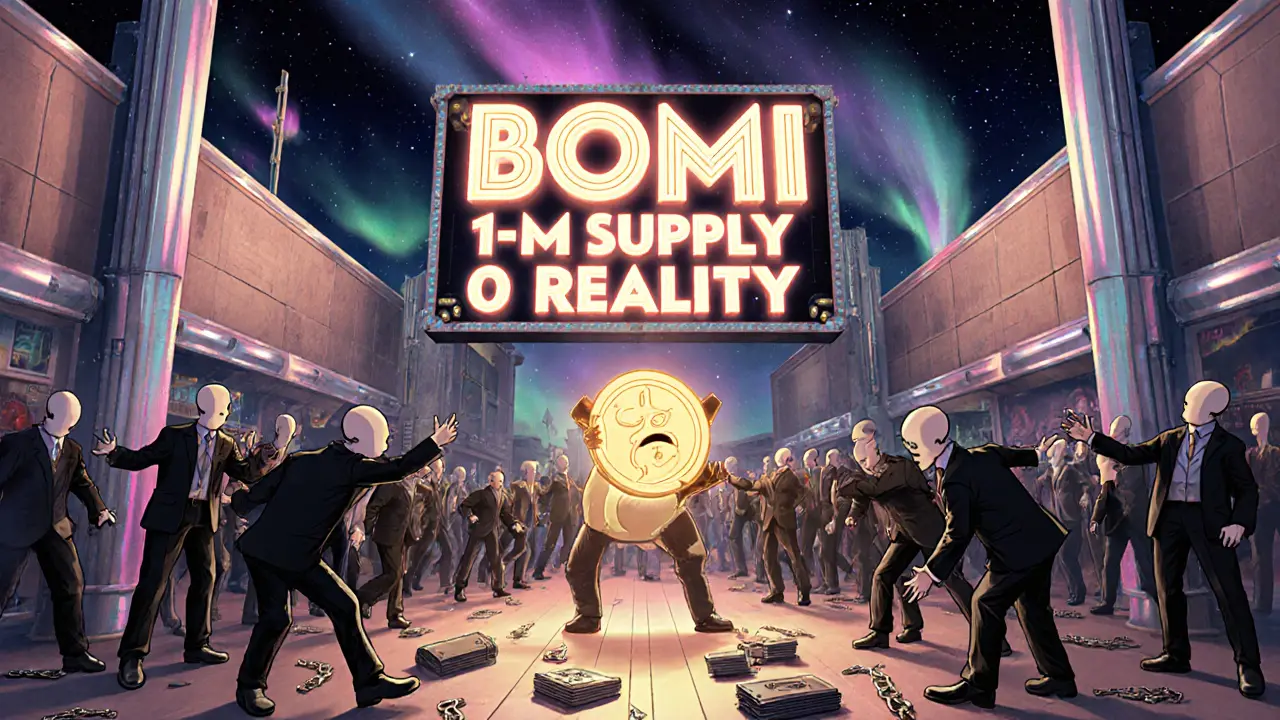
Who’s Holding BOMI?
As of October 2024, only 1,842 unique wallet addresses held BOMI. Compare that to Dogecoin, which has over 2.3 million active addresses. That’s a difference of more than 1,200 times. BOMI doesn’t have a community. It has a handful of speculators. The few people who talk about it online aren’t praising its future. They’re complaining about price swings, failed trades, and confusion over its purpose. One user on Uniswap’s forum wrote: "I bought BOMI because it was trending. Now I don’t even know why I own it."Should You Buy BOMI?
Only if you understand this: you’re not investing in a project. You’re betting on the next person buying it for more than you paid. If you’ve got money you can afford to lose - like spare change you’d spend on a lottery ticket - then maybe you’ll dabble. But treat it like entertainment, not finance. Don’t use savings. Don’t borrow. Don’t go all-in because you saw a TikTok video saying it’ll "moon." BOMI doesn’t have a moon. It has a contract address and a lot of risk.The Bottom Line
Book of Miggles (BOMI) is a memecoin with no substance, no team, no roadmap, and no future beyond short-term gambling. It exists because the Base blockchain is hot, and people are rushing to create tokens that ride the trend. But most of these tokens - including BOMI - will disappear within months. If you want to explore crypto on Base, look at projects with real teams, audits, and clear goals. Don’t chase names that sound like memes. The only thing BOMI is guaranteed to deliver is volatility - and possibly a loss.Is BOMI a real cryptocurrency?
Yes, BOMI is a real token on the Base blockchain - it has a contract address and trades on decentralized exchanges. But "real" doesn’t mean valuable or legitimate. It’s a memecoin with no utility, no team, and no roadmap - making it more of a digital gamble than a true cryptocurrency.
Can I buy BOMI on Coinbase or Binance?
No. Binance explicitly states BOMI is not listed on their platform. Coinbase does not list BOMI either. You can only buy it on decentralized exchanges like Uniswap V2 on Base or MEXC. This means you need a Web3 wallet and must handle your own security - no customer support if something goes wrong.
Why is BOMI’s price so unstable?
BOMI has extremely low liquidity. Most of its trading volume happens on just one Uniswap pair. That means a small number of large trades can swing the price by 20% or more in minutes. There’s no deep market to absorb buys or sells - so prices jump unpredictably.
Is BOMI a scam?
It’s not proven to be a scam - but it has all the warning signs. No team, no audit, no roadmap, no utility, and zero transparency. Many experts classify tokens like this as "high-risk speculative assets" with a high chance of becoming worthless. It’s not illegal, but it’s extremely dangerous.
What’s the point of BOMI?
There is no clear point. The official description says it "promotes all projects on the Base chain," but there’s no evidence of that happening. No partnerships, no events, no content. It appears to exist solely for speculative trading - making it a classic memecoin with no real purpose beyond hype.
How do I buy BOMI safely?
You can’t buy it safely - only cautiously. Use MetaMask or another Web3 wallet, connect to the Base network using Chainlist.org, and only trade on Uniswap V2. Set slippage to 10-15%, never invest more than you can lose, and assume you might lose it all. There is no customer service, no refund policy, and no safety net.
